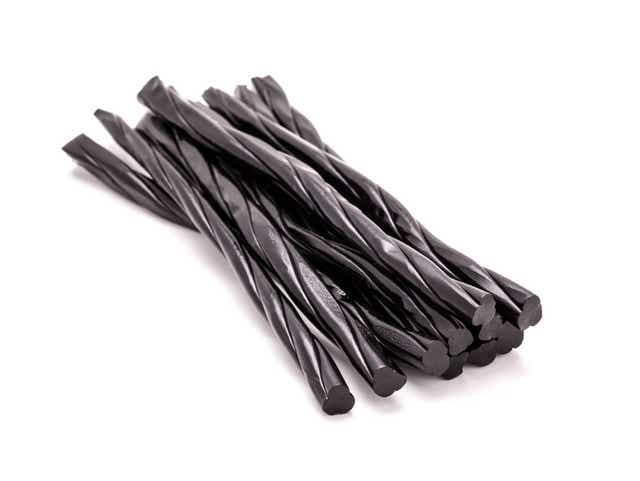Your cart is currently empty!

What Is Black Licorice?
Black licorice is a confection typically flavored and colored black with the extract from the roots of the licorice plant. Licorice root, botanically known as glycyrrhiza glabra, translates to “sweet root” in Greek. An ancient cure-all, black licorice has long been used to soothe gastrointestinal conditions and contains anti-inflammatory and immune-boosting properties.
The flavor of black licorice candy can taste sweet and slightly bitter, with notes of anise and fennel.
A history of black licorice: from global medicine to sweet treat
The oldest recorded use of licorice root was found on a Sumer tablet in Mesopotamia (2000 BC). While licorice candy is relatively new, licorice root has been used medicinally since ancient times. The Egyptians, Greeks, Hindus, Babylonians, and Chinese used licorice root as an herbal remedy for coughs, sore throats, and indigestion. It was mixed with honey to treat wounds. The Egyptians also used licorice in a popular men’s drink called mai sus.
Black licorice candy Licorice grew for at least 500 years in Europe before the first black licorice candies were crafted. The history is unclear. The Romans may have introduced it. We know English monastic orders (largely from Spain and Italy) grew it as a medicinal plant. However it rooted, by the 14th century Europeans were brewing licorice beer for medical tonics and recreational enjoyment. Licorice added a distinctively aromatic characteristic and foamy head. In the Late Middle Ages, it was being molded into pastilles. By the 16th century, licorice was used as a sweetener in Elizabethan England.
In the 18th century George Dunhill, a seven-year-old from Pontefract, added sugar to medical licorice to make the first licorice candy. Soon after, sweets called Pontefract cakes become popular in England. The Dutch created a new process of extracting Glycyrrhizin acid from the licorice root and created a new method to quickly manufacture licorice candy. Dutch merchants spread the new candy throughout their trade routes, eventually to the Americas.
How Is Black Licorice Made?
Licorice manufacture begins by making a batch of licorice paste typically with liquorice extract, sugar, a binder, starch or flour, gum arabic, flavoring, ammonium chloride, molasses, and gelatin. The batch is cooked then extruded through a nozzle in a variety of shapes including: braids, straw, twists, shoestrings, and ribbons. Once they have cooled, they are cut into pieces of a desired length and finished with a glaze that enhances the shine of the product and keeps the pieces from sticking together in the packaging.
What Is the Difference Between Black Licorice and Red Licorice?
There are differences between black and red licorice that go beyond color and flavor. Black licorice is flavored with licorice extract (from the licorice plant), anise, or a combination of the two. It can also contain molasses, which is added to enhance the bittersweet licorice flavor. Red licorice does not contain licorice extract and is commonly made with artificial or natural food dye and fruit flavorings such as strawberry, cherry, or raspberry.
Are there risks to eating too much black licorice?
According to the FDA, eating more than 2 oz. of black licorice daily for 14 days or longer can cause potassium levels to drop dangerously low. Moderate your love of licorice. Pregnant and breastfeeding women should not eat any licorice.
If you have a medical condition, consult your doctor about diet. Some circulatory, blood and pulmonary conditions can be impacted by licorice root. It may be contraindicative to your medication or treatment.
by